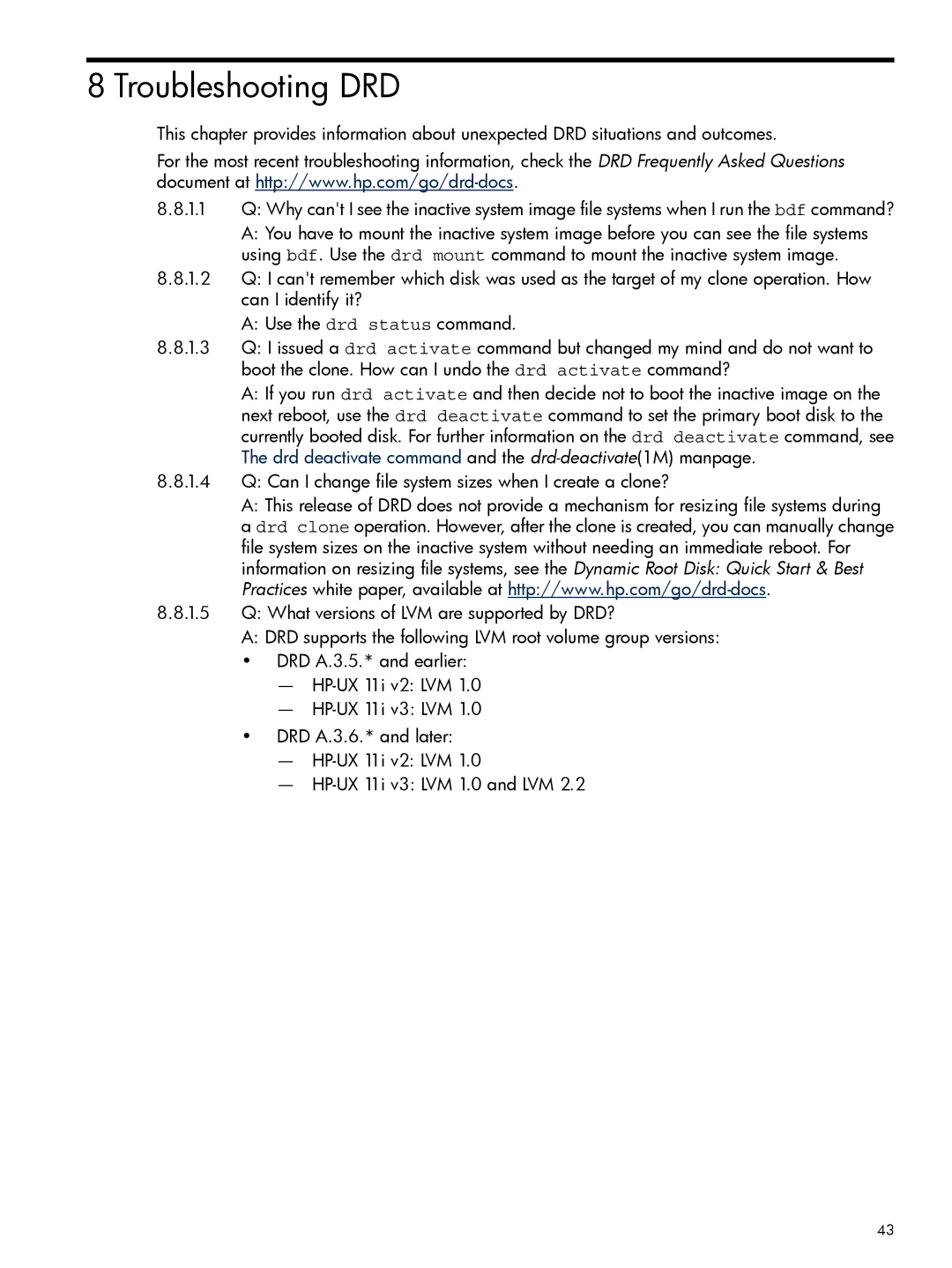8 Troubleshooting DRD
This chapter provides information about unexpected DRD situations and outcomes.
For the most recent troubleshooting information, check the DRD Frequently Asked Questions document at
8.8.1.1Q: Why can't I see the inactive system image file systems when I run the bdf command?
A:You have to mount the inactive system image before you can see the file systems using bdf. Use the drd mount command to mount the inactive system image.
8.8.1.2Q: I can't remember which disk was used as the target of my clone operation. How can I identify it?
A:Use the drd status command.
8.8.1.3Q: I issued a drd activate command but changed my mind and do not want to boot the clone. How can I undo the drd activate command?
A:If you run drd activate and then decide not to boot the inactive image on the next reboot, use the drd deactivate command to set the primary boot disk to the currently booted disk. For further information on the drd deactivate command, see The drd deactivate command and the
8.8.1.4Q: Can I change file system sizes when I create a clone?
A:This release of DRD does not provide a mechanism for resizing file systems during a drd clone operation. However, after the clone is created, you can manually change file system sizes on the inactive system without needing an immediate reboot. For information on resizing file systems, see the Dynamic Root Disk: Quick Start & Best Practices white paper, available at
8.8.1.5Q: What versions of LVM are supported by DRD?
A:DRD supports the following LVM root volume group versions:
•DRD A.3.5.* and earlier:
—
—
•DRD A.3.6.* and later:
—
—
43
